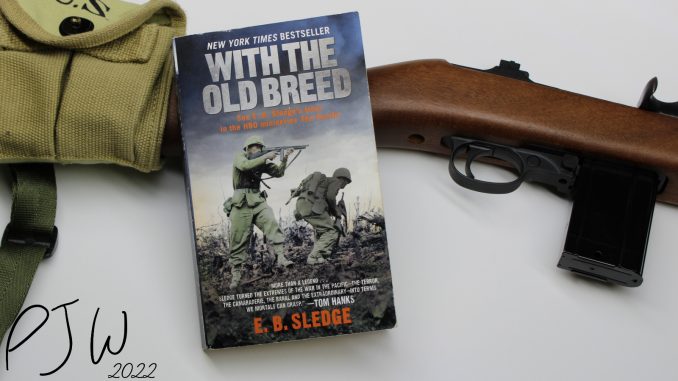
My friends and family are well aware of my interest in the Pacific Theater of WW2. The Last Stand of the Tin Can Sailors was a gift from a friend, and the subject of this review was donated by my old man. With the Old Breed: At Peleliu and Okinawa are the memoirs of the late CPL Eugene (Sledgehammer) Sledge. Sledgehammer was an enlisted mortarman in K Company, 3rd Battalion, 5th Marines, 1st Marine Division (K/3/5), and these memoirs take us from Sledge’s enlistment, till the end of his fighting on Okinawa. I found the book to be incredibly sobering, and wanted to discuss it here.
Eugene Sledge – Mobile, Alabama to Pavuvu
Eugene Sledge was born to Edward & Martha Frank Sledge of Mobile, Alabama on November 4th, 1923. Edward was a physician, and Martha a dean at a women’s school. Eugene’s health was poor as he grew up, but when WW2 broke out, he decided that he wanted to join the military.
With the Old Breed begins in late 1942, with Sledge volunteering for the Marine Corps. After a short stint in the V-12 Program, Sledge enlisted in the Marines. Sledge trained stateside, and was able to choose to be a mortarman. After this short training stateside, Sledge was sent into the Pacific.
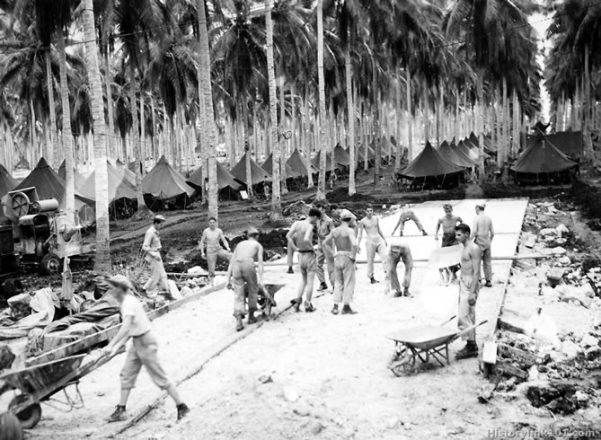
Sledge trained with K/3/5 on various islands, including Guadalcanal, however, their home base was on Pavuvu. Pavuvu is part of the Russell Island Chain, just North of Guadalcanal. While Pavuvu was home, it was hellish. Sledge writes of massive landcrabs, and rotting coconuts being the enemy on the island, and harsh work details being commonplace. However, Pavuvu was not nearly as horrible as the fighting to come.
Peleliu
Sledge’s first experience with combat would happen in September of 1944, with the Battle of Peleliu. Peleliu was a beach landing invasion, spearheaded by the 1st Marine Division. It was a bloody, hot, and excruciating battle, that lasted two months. Peleliu and the nearby Ngesebus Island were quite small islands, making up part of the Palau Island Chain. The islands were made mostly of coral, which led to incredibly harsh fighting conditions.

Sledge’s account of the battle marks it as a terrifying experience. Not only did the Marines need to contend with horrifying combatants, shelling, and supply issues, but the landscape itself was an enemy. The coral nature of the island made it hard to dig fighting positions, and the intense heat and coral dust made the island living Hell. Freshwater was not a given on Peleliu, nor was the ability to be sanitary. Sledge talks about the horrid smell of rotting corpses, rations, and exposed feces all over the island. While the idea of combat already sounds horrible, Sledge discusses that most accounts tend to not include how filthy the areas become. This acknowledgement is something that I seldom see in war memoirs.
K/3/5 lost a lot of enlisted men and officers during the fighting on Peleliu, something that Sledge takes the effort to note. The men of K/3/5 looked up to their officers and higher ranking enlisted men, and their loss affected them deeply. The title of the book comes from the loss, both physically and emotionally, of the leaders. By the end of Peleliu, Sledge and the 1st Marines needed some time to lick their wounds.
A Welcome Respite on Pavuvu
When Sledge returns to Pavuvu, it is overrun with crabs, but that is a welcome sight compared to the horrors of combat. K/3/5 spends downtime resting, doing work parties, and training. Sledge talks fondly about Thanksgiving and Christmas of 1944, however, the “good” times run out eventually. Sledge recounts the anger and sadness of losing so many comrades, and how the replacement troops could never fill the gaps.
After 5 months on Pavuvu, it was back to combat. Sledge and the 1st Marines loaded up, and prepared to invade the island of Okinawa.
Okinawa
The Battle of Okinawa was quite a change of pace for K/3/5. The beach landing on April 1st was uneventful, with no real combat to be seen. Sledge recounts that the first month on Okinawa was spent patrolling North of where the combat was, but that changed by May.
By May, K/3/5 was sent South to assist the Army with fighting the Japanese. If I had to use one word to describe the environment, it would be “muddy”. The Okinawan Campaign was often fought in the rain, uphill, in feet of mud. Sledge describes the combat in May as something akin to that of the combat in WW1. While Peleliu was hot and dry, Okinawa was cold and wet.
As a reader, Sledge’s experience on Okinawa feels like a Pacific Passchendaele. The shelling, the mud, and the piling of bodies seems apocalyptic. By this point in the war, the Japanese were deeply intrenched into cave systems and fighting positions. Standstills and breakthroughs were common, with lots of artillery, mortars, and bombings pushing each way. Okinawan civilians were caught in the crossfire, and many US and Japanese troops died during the fighting.
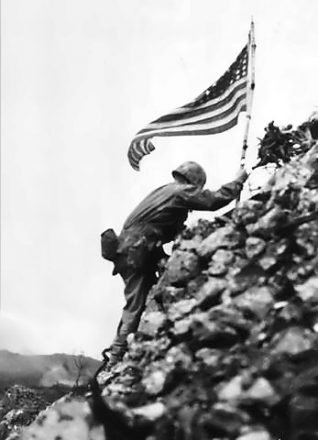
After a month fighting, K/3/5 were rotated back North for a short respite. They would later join the fighting in the South again, until the end of hostilities near the end of June. Sledge mentions that while he’d like to have a picturesque ending to his book, but the last task of K/3/5 was burying bodies, and collecting brass.
Life Postwar
Despite the combat being over, Sledge’s time in the Marine Corps was not. Sledge would be send to Peking (Beijing now), and was on deployment until early 1946. This is discussed in Sledge’s second book China Marine. I’ve not yet read it, but I am looking forward to it.
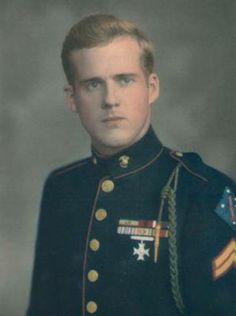
Sledge would struggle with returning to civilian life after returning home. He’d enter academia, and eventually begin teaching in his home state. His wife urged him to write Old Breed as a coping mechanism, and the first edition of the book was published in 1981.
What Makes With the Old Breed So Good?
These memoirs are some of the most honest, transparent writings I’ve ever laid eyes upon. Sledge is a master with words, almost like Hemingway, as the words create vivid images. I could almost feel like I was tired, hot, and thirsty on a pulverized coral island while reading about Peleliu. I could image (to the best of my ability) being stuck in the mud, around decaying corpses on the hills of The Half Moon on Okinawa. Sledge’s honesty is apparent, as he does not shy away from how hopeless, and disparaged he felt.
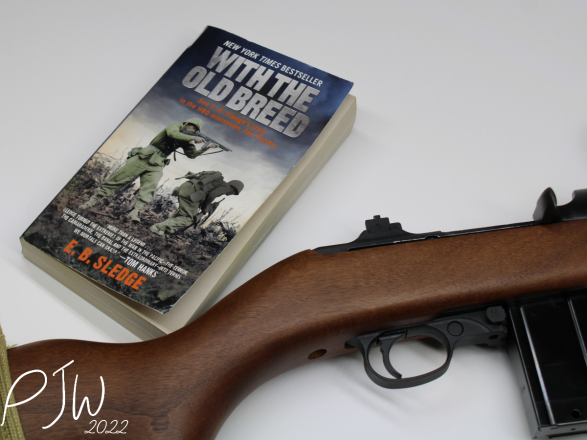
With the number of men referenced in the book, you’d think that they would run together in the reader’s mind. However, they do not, as Sledge provides enough detail to make it feel as though we also know these comrades. The men that died were not just names, but people with personalities, desires, and hopes. Sledge makes this clear, and as a reader, I felt pain when they had passed away. The tales of heroism, (and sometimes stupidity) are here on full display.
Sledge’s account is gruesome, gritty, and honest. Gore, disembowelment, and death are omnipresent, in a manner that even 40 years after publishing, still seems shocking.
The book paints a picture of Hell in the Pacific, but eloquently written. This book is a clear recommendation from me, and I’d like to show some passages that I found powerful.
Quotes From With the Old Breed
“My experiences on Peleliu and Okinawa made me believe that the Japanese held mutual feelings for us. They were a fanatical enemy; that is to say, they believed in their cause with an intensity little understood by many postwar Americans, and possibly many Japanese, as well. This collective attitude, Marine and Japanese, resulted in savage, ferocious fighting with no holds barred. This was not the dispassionate killing seen on other fronts or in other wars. This was brutish, primitive hatred, as characteristic of the horror of war in the Pacific as the palm trees and the islands. To comprehend what the troops endured then and there, one must take into full account this aspect of the nature of the Marine’s war.”
“But I also learned important things on Peleliu. A man’s ability to depend on his comrades and immediate leadership is absolutely necessary. I’m convinced that our discipline, esprit de corps, and tough training were the ingredients that equipped me to survive the ordeal physically and mentally—given a lot of good luck, of course. I learned realism, too. To defeat an enemy as tough and dedicated as the Japanese, we had to be just as tough. We had to be just as dedicated to America as they were to their emperor. I think this was the essence of Marine Corps doctrine in World War II, and that history vindicates this doctrine.
“War is brutish, inglorious, and a terrible waste… The only redeeming factors were my comrades’ incredible bravery and their devotion to each other. Marine Corps training taught us to kill efficiently and to try to survive. But it also taught us loyalty to each other – and love. That espirit de corps sustained us.”
Book Recommendations
If you enjoy reading about the Asia-Pacific war, check out the following previously reviewed books:
- Shatter Sword: The Untold Story of the Battle of Midway – Jon Parshall & Tony Tully
- The Last Stand of the Tin Can Sailors – James D. Hornficsher
Thanks to my dad for letting me have his copy of With the Old Breed.


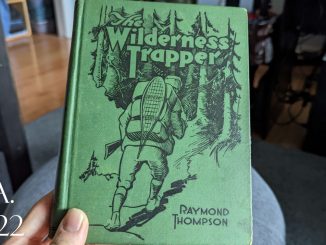

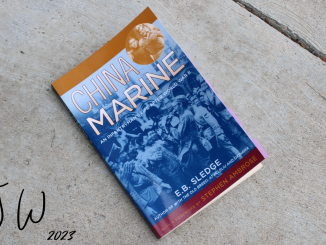
Be the first to comment